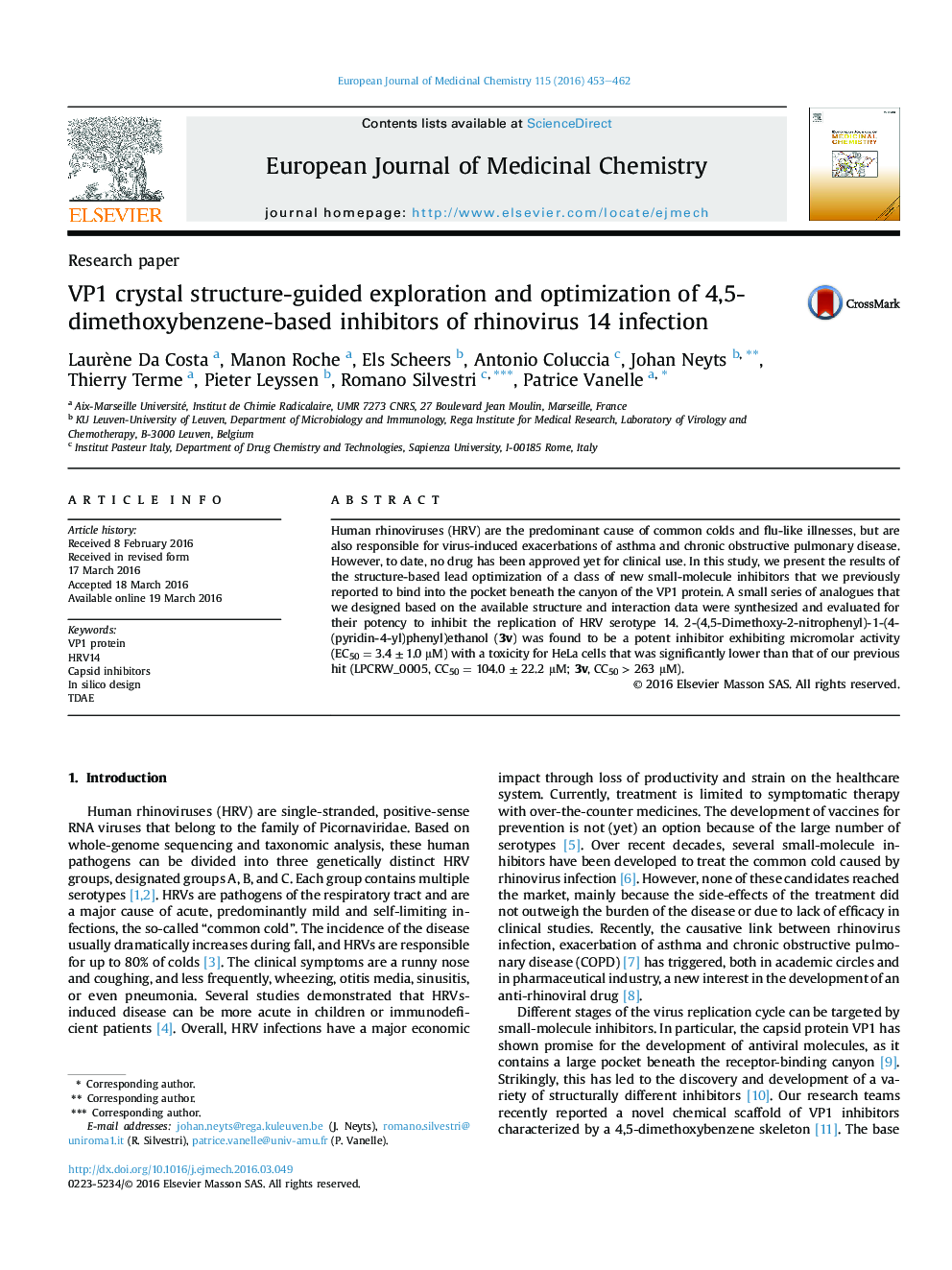| Article ID | Journal | Published Year | Pages | File Type |
|---|---|---|---|---|
| 1392058 | European Journal of Medicinal Chemistry | 2016 | 10 Pages |
•Description of potent derivatives with HRV serotype 14 activity.•Use of docking experiments (in silico design) to focus the chemistry effort.•Presentation of Structure Activity Relationships with topological approach.•The synthesis is straightforward and mainly achieved by using TDAE.
Human rhinoviruses (HRV) are the predominant cause of common colds and flu-like illnesses, but are also responsible for virus-induced exacerbations of asthma and chronic obstructive pulmonary disease. However, to date, no drug has been approved yet for clinical use. In this study, we present the results of the structure-based lead optimization of a class of new small-molecule inhibitors that we previously reported to bind into the pocket beneath the canyon of the VP1 protein. A small series of analogues that we designed based on the available structure and interaction data were synthesized and evaluated for their potency to inhibit the replication of HRV serotype 14. 2-(4,5-Dimethoxy-2-nitrophenyl)-1-(4-(pyridin-4-yl)phenyl)ethanol (3v) was found to be a potent inhibitor exhibiting micromolar activity (EC50 = 3.4 ± 1.0 μM) with a toxicity for HeLa cells that was significantly lower than that of our previous hit (LPCRW_0005, CC50 = 104.0 ± 22.2 μM; 3v, CC50 > 263 μM).
Graphical abstractFigure optionsDownload full-size imageDownload as PowerPoint slide
